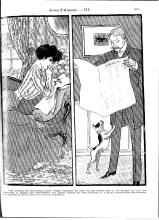In 1875, Parisian daily Le Figaro introduced a personal advertising column called the petite correspondance, which allowed people to write to each other using the newspaper as mediator, avoiding home addresses and the watchful parents or spouses who lived at them. The often-amorous exchanges this facilitated, some fictional (commissioned by the newspaper to entice readers), some real, drew on older forms, such as epistolary novels. In this way, they catered to readers’ established taste for voyeurism while drawing them into a new erotic temporality, as these notes were simultaneously exchanged and voyeuristically read. Created in the very years that witnessed the conception of laws granting press freedom and setting the stage for a redefinition of “pornography,” the section brought together press and sexuality in novel ways, laying the groundwork for the forms of voyeuristic reading and exhibitionist living we—through social media—are steeped in today.
"Confidences épistolaires de la Vénus publique": Real-time Communication, Voyeuristic Reading, and Social Media’s Erotic Pre-History in the Petite Correspondance
Hannah Frydman, “‘Confidences épistolaires de la Vénus publique’: Real-time Communication, Voyeuristic Reading, and Social Media’s Erotic Pre-History in the Petite Correspondance.” Nineteenth-Century French Studies vol. 52, nos. 1–2 (Fall–Winter 2023–24): 89-106. https://doi.org/10.1353/ncf.2023.a911801.
